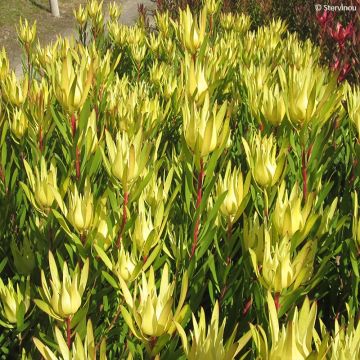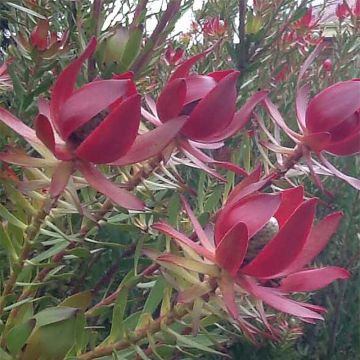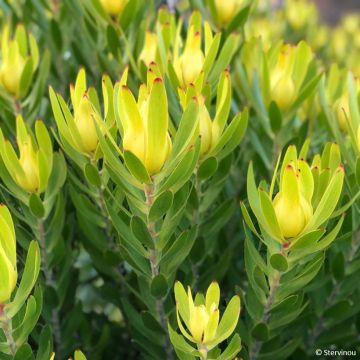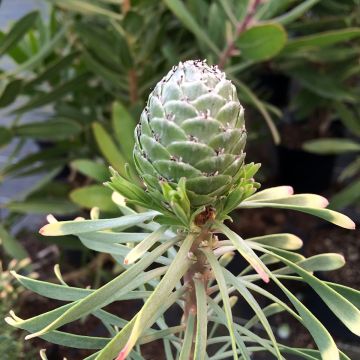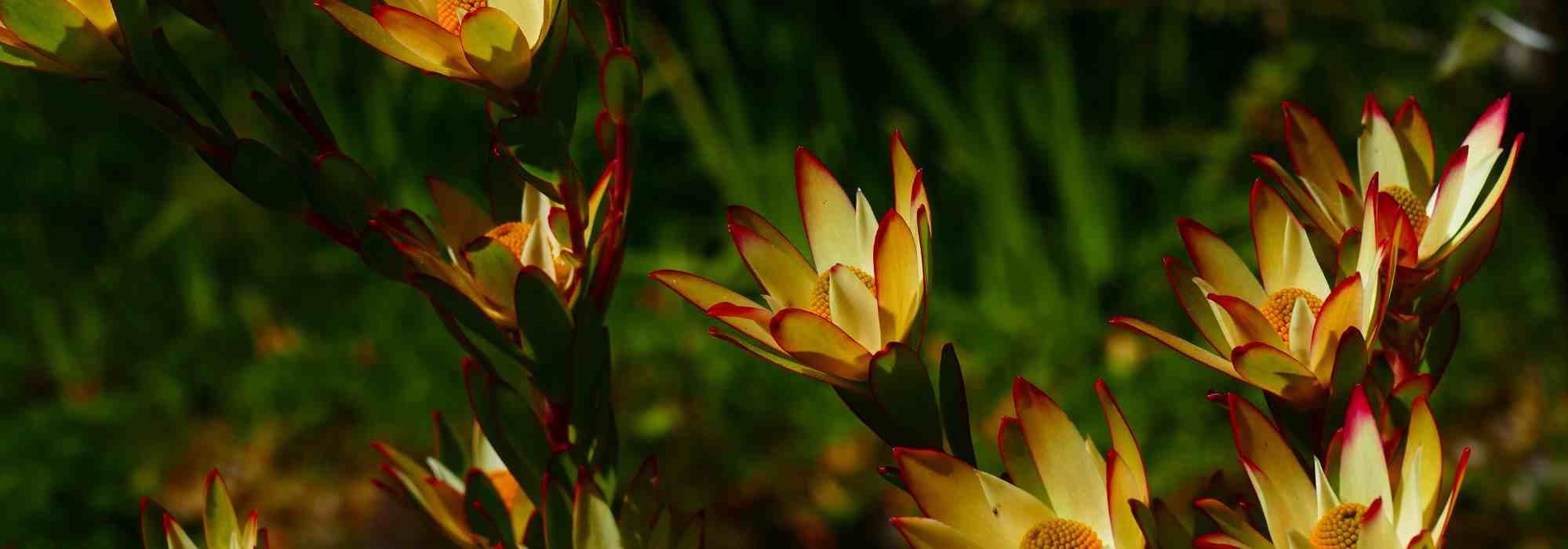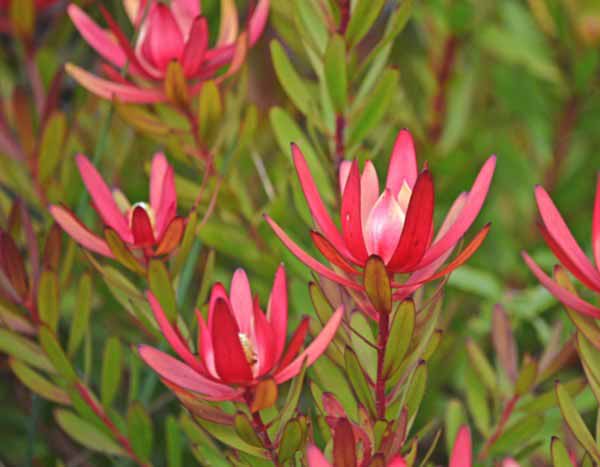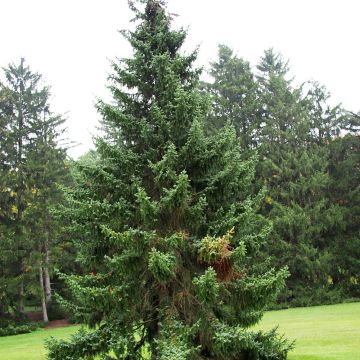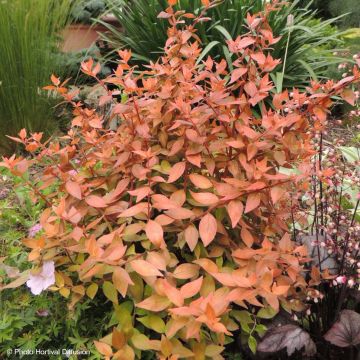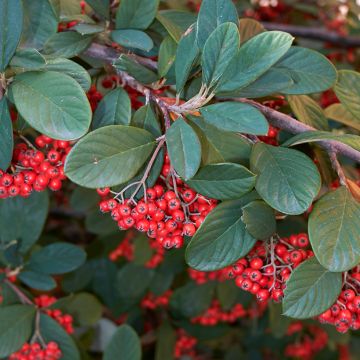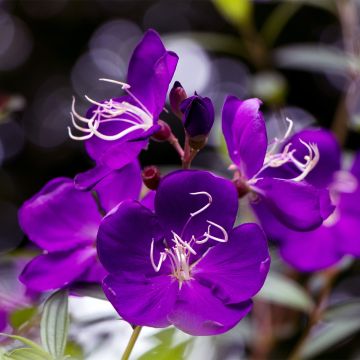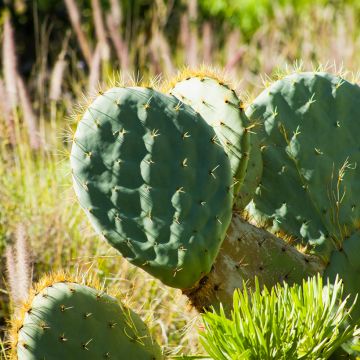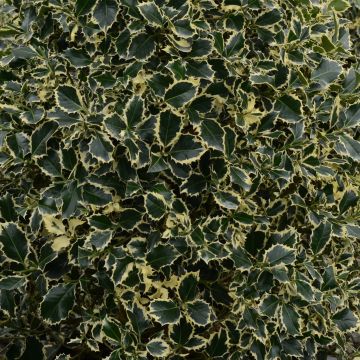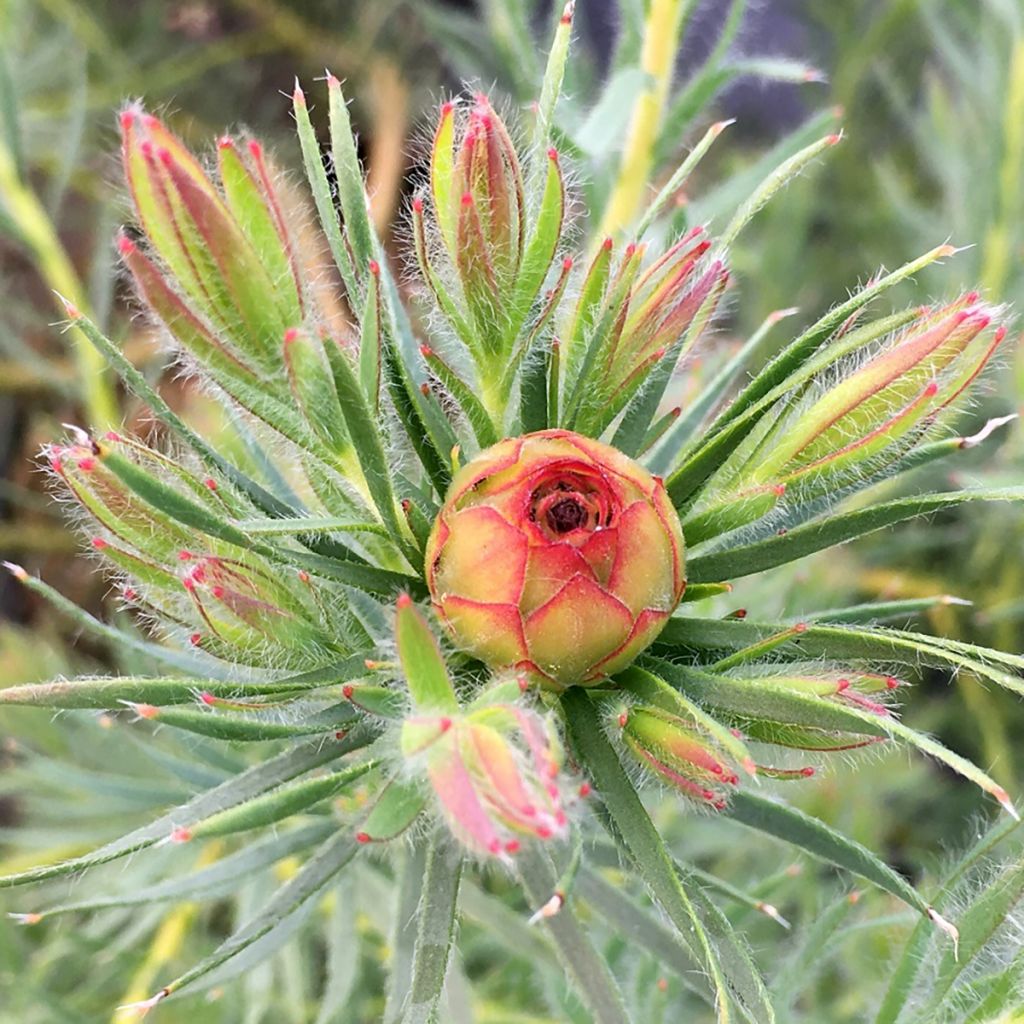

Leucadendron Jubilee Crown - Conebush
Leucadendron Jubilee Crown - Conebush
Leucadendron lanigerum x laxum Jubilee Crown
Conebush
Special offer!
Receive a €20 voucher for any order over €90 (excluding delivery costs, credit notes, and plastic-free options)!
1- Add your favorite plants to your cart.
2- Once you have reached €90, confirm your order (you can even choose the delivery date!).
3- As soon as your order is shipped, you will receive an email containing your voucher code, valid for 3 months (90 days).
Your voucher is unique and can only be used once, for any order with a minimum value of €20, excluding delivery costs.
Can be combined with other current offers, non-divisible and non-refundable.
Home or relay delivery (depending on size and destination)
Schedule delivery date,
and select date in basket
This plant carries a 24 months recovery warranty
More information
We guarantee the quality of our plants for a full growing cycle, and will replace at our expense any plant that fails to recover under normal climatic and planting conditions.
Would this plant suit my garden?
Set up your Plantfit profile →
Description
The Leucadendron 'Jubilee Crown' is an evergreen bush of South African origin as original as it is ornamental, which should be able to be acclimated in very sunny coastal gardens. It is a cousin of the proteas, with which it shares a preference for poor, dry soils in summer, as well as full sun. This female selection stands out for its fine bluish-green foliage, slightly villous, and a unique flowering in the form of small cones turning from pink to red in summer. This plant is not very hardy (up to -6°C (21.2 °F) at the peak), it withstands sea spray as well as summer drought, but its cultivation is delicate in soil that is too rich and too wet.
The Leucadendron 'Jubilee Crown' is a hybrid variety introduced in 1996, probably derived from Leucadendron lanigerum and L. Laxum, two botanical species native to Cape Town, South Africa. In this region of the Cape, regularly subjected to fires, the leucadendrons constitute an essential part of the vegetation of the fynbos which are plant formations very rich in biodiversity, in very poor, often acidic soils. These fynbos occupy a thin coastal and mountainous area characterised by a Mediterranean climate. These bushes are dioecious, meaning that there are male and female plants.
The Leucadendron Jubilee Crown is a woody and well-ramified plant from the proteaceae family. A female plant can reach up to 1.50 m (5ft) in height and 1.20 m (4ft) in spread in open ground and under favourable conditions. Its growth is quite rapid. The villous stems bear short and very thin leaves, arranged in a spiral, covered with silky hairs. They sometimes turn red in autumn due to the cold. The bush produces scaly inflorescences in the shape of small cones in spring, from April to June depending on the climate, at the end of the stems surrounded by a collar of small bracts with a sharp point, thick and leathery. These flowers are highly appreciated in floristry, due to their excellent vase life. These cones, often compared to raspberries because of their size, shape and colour, turn from pink to red over the weeks. The name of the cultivar, 'Crown Jubilee', is due to the fact that the top of the cone resembles a small red crown at the end of the season, that is, as Christmas approaches in the southern hemisphere.
The Leucadendron 'Jubilee Crown' should be planted in coastal gardens spared by heavy frosts, in light soil with a sandy or loamy tendency, acidic, low in nitrates and phosphorus. It will be a sensation in isolation, in a windbreak hedge or even at the back of dry garden beds. Plant with Dasylirion, Grevillea, Callistemon, Canary Viperina, palm trees or even Leptospermum. In less favourable climates, you can cultivate it in a pot to winter like a citrus.
Leucadendron Jubilee Crown - Conebush in pictures


Plant habit
Flowering
Foliage
Botanical data
Leucadendron
lanigerum x laxum
Jubilee Crown
Proteaceae
Conebush
South Africa
Other Leucadendron
View all →Planting and care
Plant the Leucadendron 'Jubilee Crown' in a very sunny position, sheltered from cold winds, in a very well-drained soil, preferably sandy-loamy. This plant grows in acidic or neutral soil, or even slightly calcareous. Immerse the root ball for a few minutes in a container full of water. Remove the plant from its pot. Dig a wide and deep hole in soil that is loose and light, including leaf compost and sand or non-limestone gravel. Fill the pit with the same mixture. Water to ensure proper settling around the roots. This plant fears soils that are too rich and wet in summer, but it needs water during the growing season, until flowering, especially when it is grown in a pot. Do not use fertiliser, or only a special protea amendment. Prune after flowering to maintain a compact habit. In the open ground, prefer mulching to weeding to prevent the appearance of weeds and spare the roots.
When the soil is both warm and permanently wet, leucadendrons are sensitive to phytophthora, a fungus that attacks the collar and roots of the plant, leading very quickly to its wilting. An affected plant presents branches that suddenly dry up, in wet soil.
Planting period
Intended location
Care
Planting & care advice
This item has not been reviewed yet - be the first to leave a review about it.
Similar products
Haven't found what you were looking for?
Hardiness is the lowest winter temperature a plant can endure without suffering serious damage or even dying. However, hardiness is affected by location (a sheltered area, such as a patio), protection (winter cover) and soil type (hardiness is improved by well-drained soil).

Photo Sharing Terms & Conditions
In order to encourage gardeners to interact and share their experiences, Promesse de fleurs offers various media enabling content to be uploaded onto its Site - in particular via the ‘Photo sharing’ module.
The User agrees to refrain from:
- Posting any content that is illegal, prejudicial, insulting, racist, inciteful to hatred, revisionist, contrary to public decency, that infringes on privacy or on the privacy rights of third parties, in particular the publicity rights of persons and goods, intellectual property rights, or the right to privacy.
- Submitting content on behalf of a third party;
- Impersonate the identity of a third party and/or publish any personal information about a third party;
In general, the User undertakes to refrain from any unethical behaviour.
All Content (in particular text, comments, files, images, photos, videos, creative works, etc.), which may be subject to property or intellectual property rights, image or other private rights, shall remain the property of the User, subject to the limited rights granted by the terms of the licence granted by Promesse de fleurs as stated below. Users are at liberty to publish or not to publish such Content on the Site, notably via the ‘Photo Sharing’ facility, and accept that this Content shall be made public and freely accessible, notably on the Internet.
Users further acknowledge, undertake to have ,and guarantee that they hold all necessary rights and permissions to publish such material on the Site, in particular with regard to the legislation in force pertaining to any privacy, property, intellectual property, image, or contractual rights, or rights of any other nature. By publishing such Content on the Site, Users acknowledge accepting full liability as publishers of the Content within the meaning of the law, and grant Promesse de fleurs, free of charge, an inclusive, worldwide licence for the said Content for the entire duration of its publication, including all reproduction, representation, up/downloading, displaying, performing, transmission, and storage rights.
Users also grant permission for their name to be linked to the Content and accept that this link may not always be made available.
By engaging in posting material, Users consent to their Content becoming automatically accessible on the Internet, in particular on other sites and/or blogs and/or web pages of the Promesse de fleurs site, including in particular social pages and the Promesse de fleurs catalogue.
Users may secure the removal of entrusted content free of charge by issuing a simple request via our contact form.
The flowering period indicated on our website applies to countries and regions located in USDA zone 8 (France, the United Kingdom, Ireland, the Netherlands, etc.)
It will vary according to where you live:
- In zones 9 to 10 (Italy, Spain, Greece, etc.), flowering will occur about 2 to 4 weeks earlier.
- In zones 6 to 7 (Germany, Poland, Slovenia, and lower mountainous regions), flowering will be delayed by 2 to 3 weeks.
- In zone 5 (Central Europe, Scandinavia), blooming will be delayed by 3 to 5 weeks.
In temperate climates, pruning of spring-flowering shrubs (forsythia, spireas, etc.) should be done just after flowering.
Pruning of summer-flowering shrubs (Indian Lilac, Perovskia, etc.) can be done in winter or spring.
In cold regions as well as with frost-sensitive plants, avoid pruning too early when severe frosts may still occur.
The planting period indicated on our website applies to countries and regions located in USDA zone 8 (France, United Kingdom, Ireland, Netherlands).
It will vary according to where you live:
- In Mediterranean zones (Marseille, Madrid, Milan, etc.), autumn and winter are the best planting periods.
- In continental zones (Strasbourg, Munich, Vienna, etc.), delay planting by 2 to 3 weeks in spring and bring it forward by 2 to 4 weeks in autumn.
- In mountainous regions (the Alps, Pyrenees, Carpathians, etc.), it is best to plant in late spring (May-June) or late summer (August-September).
The harvesting period indicated on our website applies to countries and regions in USDA zone 8 (France, England, Ireland, the Netherlands).
In colder areas (Scandinavia, Poland, Austria...) fruit and vegetable harvests are likely to be delayed by 3-4 weeks.
In warmer areas (Italy, Spain, Greece, etc.), harvesting will probably take place earlier, depending on weather conditions.
The sowing periods indicated on our website apply to countries and regions within USDA Zone 8 (France, UK, Ireland, Netherlands).
In colder areas (Scandinavia, Poland, Austria...), delay any outdoor sowing by 3-4 weeks, or sow under glass.
In warmer climes (Italy, Spain, Greece, etc.), bring outdoor sowing forward by a few weeks.
































